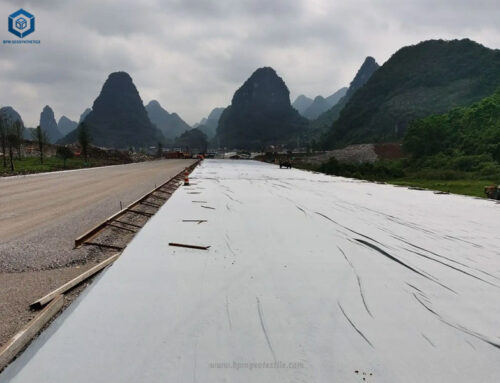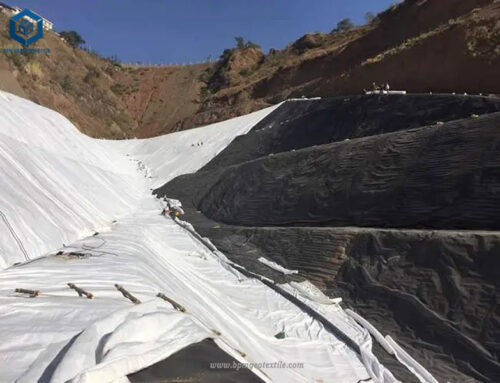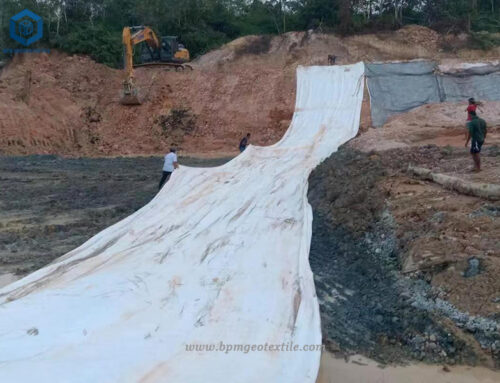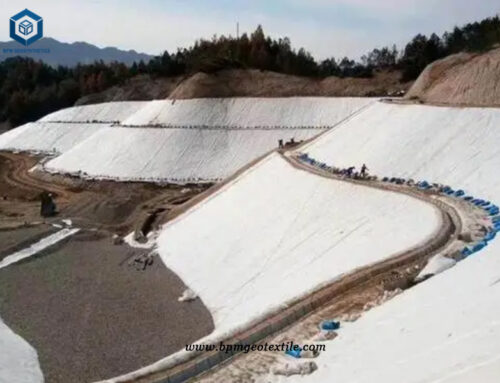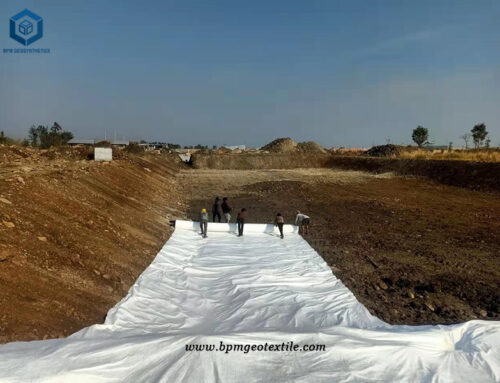Geotextile drainage mat, also referred to as geotextile drainage fabrics, are extensively utilized in geotechnical applications. They serve as filtering materials for separating soil layers, drainage materials for reservoirs and mine operations, anti-scouring materials for river dams and slope protection, and anti-cracking materials for asphalt pavements. Geotextile drainage mats primarily fulfill functions such as isolation, filtration, drainage, reinforcement, protection, and anti-puncture capabilities.In terms of specific applications, geotextiles find use as reinforcements in backfilling retaining walls, as isolation layers between road ballast and subgrades, and for reinforcing flexible pavements. These versatile geotechnical materials offer a range of benefits and play a crucial role in various construction projects.
1. What Is Geotextile Drainage Mat?
Geotextile drainage mats, also known as geotextile drainage fabric, are specialized geosynthetic materials designed for drainage applications. They are typically made from synthetic fibers such as polyester or polypropylene, which are woven or non-woven to create a fabric structure. This structure is engineered to have a specific permeability, allowing water to pass through while retaining soil particles.
These mats have extensive applications in civil engineering, construction, and environmental projects. They serve as essential filter and drainage layers, effectively managing water flow, preventing soil erosion, and providing stability to the surrounding soil and structures. The permeable nature of geotextile drainage mats enables excess water to drain away, reducing hydrostatic pressure and preventing water buildup behind structures like retaining walls.
In addition to their drainage functions, geotextile drainage mats also serve as separation layers. They play a crucial role in preventing the mixing of different soil layers or materials with distinct properties. By maintaining the separation, they help preserve the integrity and performance of the project by ensuring each material remains in its designated location.
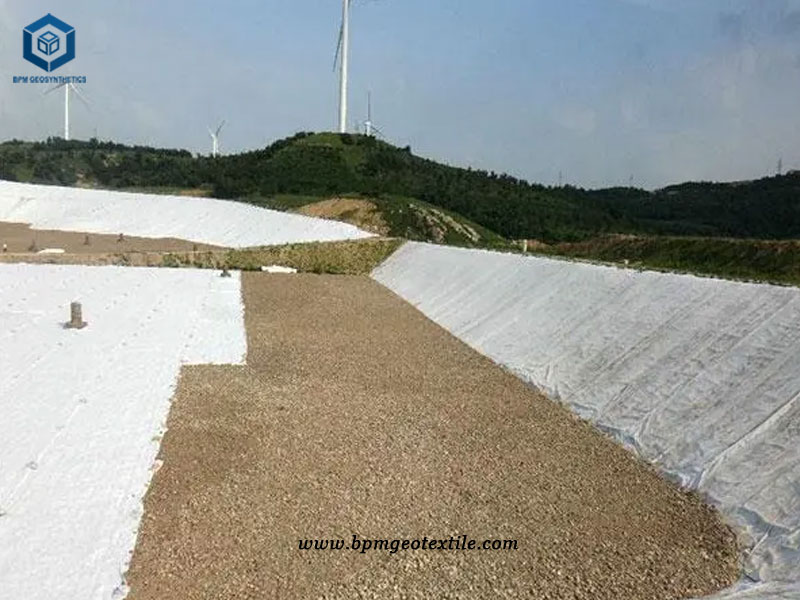
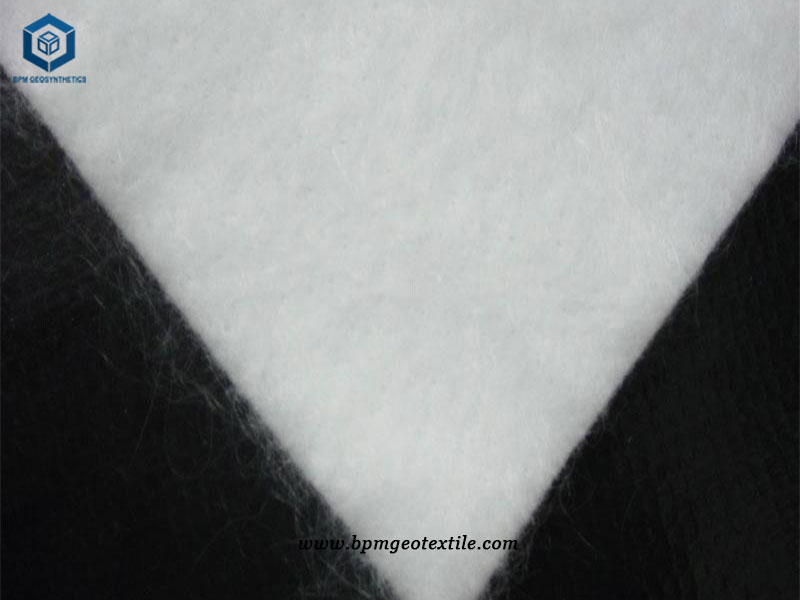
2. What Is Geotextile Drainage Mat Used for?
Geotextile drainage mats are used for managing water flow, preventing soil erosion, and providing stability in civil engineering, construction, and environmental projects.They serve as essential filter and drainage layers, allowing water to pass through while retaining soil particles, and they also act as separation layers to prevent mixing of different materials.
2.1 Managing Water Flow
Geotextile drainage mats are used to effectively manage water flow by allowing water to pass through while retaining soil particles. They help prevent water buildup and reduce hydrostatic pressure behind structures like retaining walls.
2.2 Preventing Soil Erosion
Geotextile drainage mats play a crucial role in preventing soil erosion by providing a stable layer that retains soil particles while allowing water to drain through. They help maintain the integrity of slopes, embankments, and other areas prone to erosion.
2.3 Providing Stability
Geotextile drainage mats contribute to providing stability by enhancing the structural integrity of the surrounding soil and structures. They help distribute loads, reduce settlement, and improve the overall stability of the project, particularly in areas susceptible to soil movement or instability.
3. What Are Benefits of Non Woven Geotextile Drainage Mat For Mine Drainage Project?
Non Woven Geotextile Drainage Mat Offer Several Benefits for Mine Drainage:
3.1 Excellent Drainage
Non-woven geotextile drainage mats have a high permeability that allows efficient water drainage. They help in managing groundwater levels, controlling excess water, and preventing water buildup in mine areas.
3.2 Soil Filtration and Erosion Control
These mats act as an effective filter, allowing water to pass through while retaining soil particles. They help in preventing soil erosion by stabilizing the soil and preventing sediment runoff, thereby maintaining the integrity of mine slopes and embankments.
3.3 Enhanced Slope Stability
By providing reinforcement and stabilization, non-woven geotextile drainage mats improve the overall slope stability in mine sites. They help distribute loads, reduce the potential for slope failures, and enhance the safety of the mining operation.
3.4 Long-Term Durability
Non-woven geotextile drainage mats are designed to withstand harsh environmental conditions and have excellent resistance to chemicals, UV degradation, and biological degradation. This ensures their long-term performance and durability in mine drainage projects.
3.5 Ease of Installation
These mats are lightweight and easy to handle, making them convenient to install in mining sites. They can be easily cut and shaped to fit the specific project requirements, facilitating efficient and cost-effective installation.
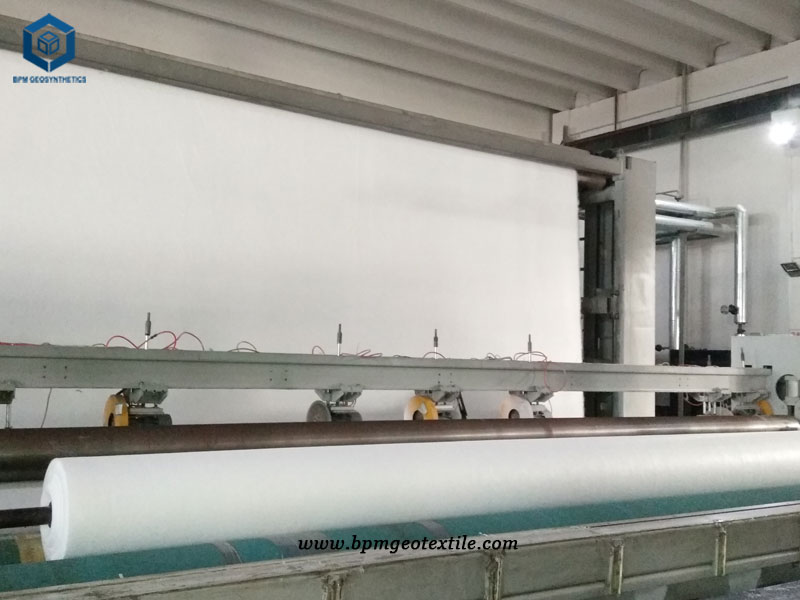
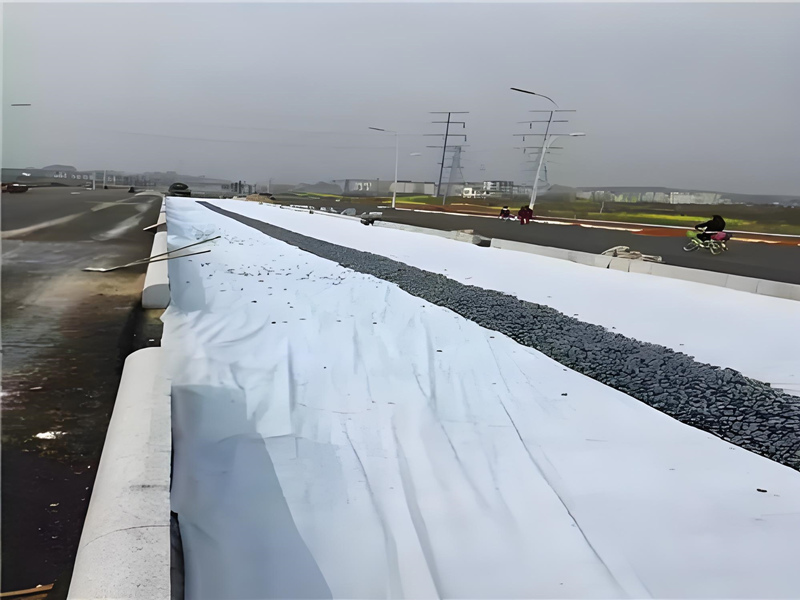
4. Case Study of Non Woven Geotextile Drainage Mat for Mine Drainage Project
An African client is working on a mine drainage project that uses geotextile for water removal. Geotextile effectively channels water away, removing surplus liquid and gas from the soil. Picking the right drainage technique, improving construction processes, and staying in touch with the designer to match the terrain and purpose are crucial for successful mine drainage.
Construction process
During construction, the geotextile is placed over the geomembrane layer, overlapping naturally. The upper layer of the geomembrane is then connected using seaming or hot-air welding. Filament geotextiles are joined through hot air welding, where a heat gun quickly raises connection points to high temperatures, melting them for a secure bond under pressure. If wet weather prevents thermal bonding, a suture connection method is used instead. This involves a special sewing machine and chemical- and UV-resistant threads. Stitching requires a 10cm width, while overlapping and welding need 20cm. Seams must match the geotextile quality and resist chemicals and UV. After laying and inspection by the supervision engineer, the geotextile is correctly positioned. With Party A’s and the supervisor’s approval, the geotextile on the membrane is laid out as planned, and the film is buried in the anchor groove.
Product Specifications
The project requires a total quantity of 20,000 square meters of non-woven geotextile with a weight of 200g/m². Each roll has dimensions of 5.8m in width and 100m in length. By following these installation guidelines and utilizing the specified non-woven geotextile, the mine drainage project aims to effectively manage water flow and enhance the overall drainage system within the mine area.
5. Summary
BPM Non Woven Geotextile Drainage Mats are favored by customers due to their structural and physical properties. They are now widely used in infrastructure construction such as highways, railways, water conservancy, water transportation, airports, and environmental protection, etc. Non Woven Geotextile Drainage Mat for Mine Drainage Project in Africa By participating in this bidding project, our application solution for Geotextile Drainage Mats has become more mature. Professionalism and service capabilities are constantly being strengthened. We look forward to solving your problems with our best quality and complete solutions, and creating brilliance together with BPM Geotextile.

